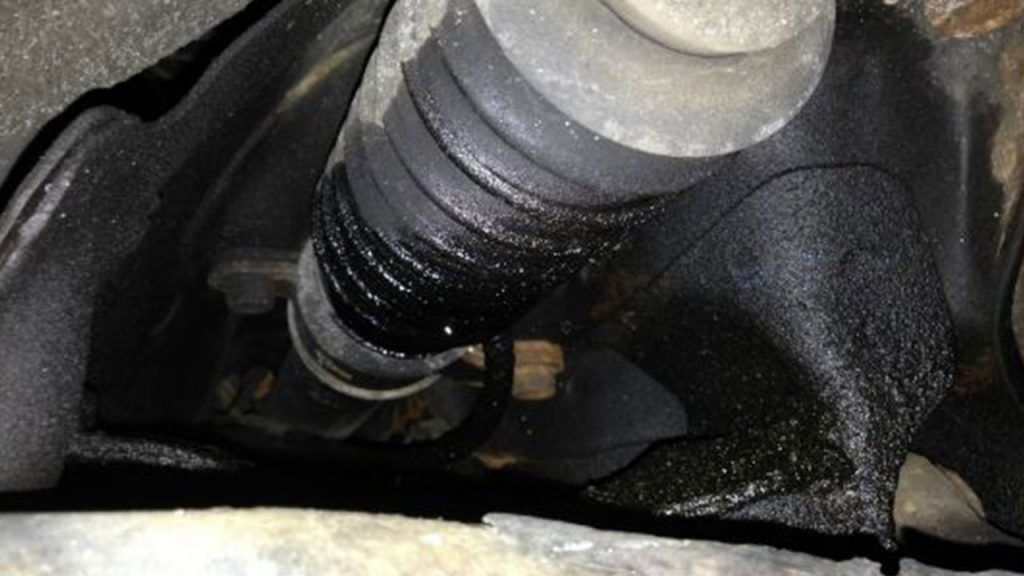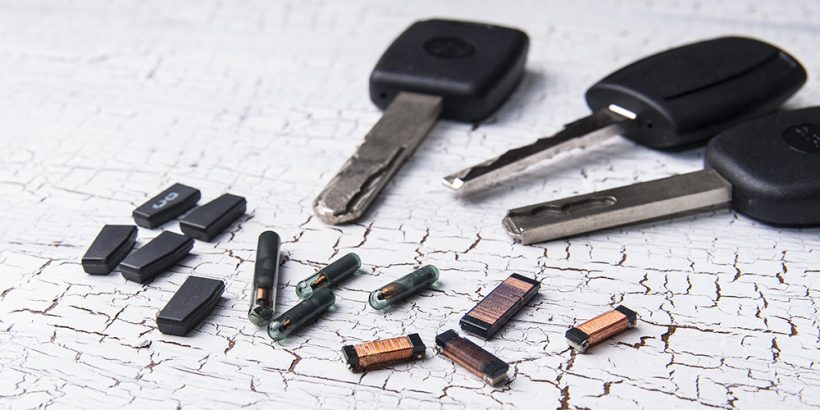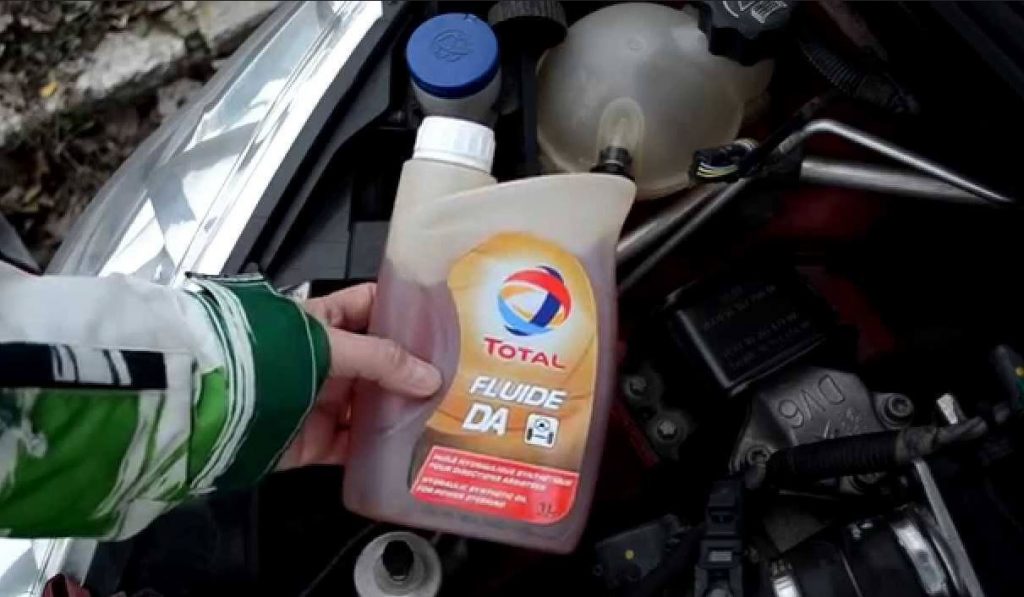Last updated on October 17th, 2023 at 04:37 pm
The battery is an essential part of your vehicle that converts chemical energy to electrical energy, this electrical energy serves as the power utilized by the vehicle’s features, including the starter.
Your car battery doesn’t last forever, as its lifespan is between 3 to 5 years. However, this time frame depends on the car and its model.
Nevertheless, there is nothing so annoying and frustrating as parking a perfect running vehicle at night to find out in the morning that the car won’t turn on as you notice a clicking noise.

So many questions would arise as such, what could have caused this? Did I put off the electrical system? even if you have done all these and more.
The typical problem or cause of this frustration is often the parasitic battery drain, as other causes include the battery’s age, loose terminals, bad alternator, and many others.
However, this informative post will explore the following content to your understanding; what is a parasitic drain on the battery, common causes of parasitic battery drain, what are some car battery-drain preventers, parasitic battery drain fix cost, can a bad ground cause a parasitic draw and many more. Relax, and let’s get started!
What Is A Parasitic Drain On The Battery?
A parasitic drain is the continuous current draining when the vehicle is off or when the doors are closed as it is parked.
The parasitic drain on the battery results from faulty electrical components installed wrongly in your vehicle. The effects of the parasitic drain are so high that it drains the battery completely.
Common Causes Of Parasitic Battery Drain
The causes of parasitic battery drain are as follows;
- Short Circuits or Electrical Components: These devices like headlights, relay switches, the trunk, under-hood or glove lighting, and computer module cause parasitic battery drain as they remain energized.
- Faulty Alternator Diodes: Your vehicle’s alternator has about 6 diodes that convert alternating current (AC) to direct current (DC) on which the battery runs. A lousy diode can affect the alternator, preventing your battery from charging.
- Faulty battery: An old battery with weak cells can also trigger parasitic battery drain, even if you recharge it repeatedly.
What Are Some Car Battery Drain Preventers?
Car battery drain preventers are devices that supply electrical power to Blackvue dashcam from your vehicle’s battery system concerning the standard voltage to prevent your car battery from discharging. Configuring the voltage/timer of these preventers, they deliver power to the Blackvue and break it when the time has passed. The timer works if the engine is shut down and stops if the motor turns on. In essence, by setting the voltage, the preventers deliver power to the Blackvue since the capacity of your vehicle’s battery is dropped below the configured voltage. Hence, the preventers cut the electrical power. So, the voltage cut-off is functional when the engine is shut down and stops if the engine starts again.
Which Parasitic Battery Drain Test Methods
If you are experiencing a parasitic battery drain, the following tests will help you find the culprit in your vehicle’s abnormalities.
Let’s start by highlighting the test methods!
1. Faulty Alternator Diode Test
A lousy alternator diode will eventually dim your vehicle’s headlights and instrument panel and drain your battery overnight. Although, if any diode in your car alternator fails, it will prevent electrical energy from flowing to various electrical components, resulting in the abovementioned issues. Therefore, to check for a bad alternator diode, use the guide below;
- Switch your voltmeter to a low setting on the AC voltage scale.
- As the engine runs, touch the meter probes to your car’s battery terminals, red (positive) to the positive terminal and black (negative) to the negative terminal.
- Two or more diodes are lousy when you record more than 0.5ACV.
So far, a small amount of AC voltage will indicate a lousy diode, and replacement is next.
2. Amperage Battery Drain Test
The amperage battery test has been an efficient and popular method. Still, it isn’t effective in the old vehicle models because of the challenges of the computer modules of these old vehicles. Your vehicle’s repair manual can help you identify the electrical components. So, if there is an increase by 1 Amp will indicate.
3. Car Battery Hydrometer Test
Having the hydrometer test is a quick way to check the well-being of your battery. The test tells when your battery needs a charge or if any cell has failed. In essence, you can do this test with batteries with removable caps or visit an auto shop. However, your battery needs to charge if your hydrometer level reads below 1.265.
The Voltage Drop Battery Drain Test
The drop voltage test is a simple way to locate faulty circuits without disturbing the computer modules, as it functions effectively on older vehicle models. Using a digital multimeter is vital for voltage tests. Before this test, charge your battery fully and clean your meter probes to ensure accurate readings. Determining the voltage drop due to resistance in a circuit during the flow of current and heat emission, the below steps are vital;
- Start by checking your owner’s manual for the accurate time for your car modules to shut off and read the voltage drop on the control modules during the sitting period.
- Disconnect the negative cable from the battery terminal. Then, connect the digital meter’s ground wire (black wire) to the battery’s negative terminal.
- Also, connect the meter’s red (positive) to the battery negative terminal.
- Set your multimeter to millivolts (mV) as you put it on.
- Check for a drop in voltage on the fuses for the stereo and computer circuit. Then, at the back of the fuse, touch the test point with the meter’s leads and the other fuse test point with the other lead probes as you watch your multimeter and record its readings.
- Once ready, start with the fuses in the under-hood fuse box. Then to the fuses in the dashboard, make records of your readings.
- Convert your readings in voltage to the current flowing in amperage.
- You found the wrong circuit if any amperage exceeds your vehicle’s average current.
What Is Draining My Car Battery When It’s Off?
Some of the other Causes Of Parasitic Battery Drain are as follows:
1. Battery is worn out or old.
Your car’s battery is not the only thing that lasts forever. Your vehicle’s battery can last for up to five years in some cases. However, this depends on where you live, how you drive, and how much you use it. Your battery’s life span could be reduced by extreme temperatures, frequent short trips and daily use. It might be time to get a new car battery if your car battery is rapidly dying, even after a jumpstart.
2. While you are driving, the battery isn’t charging.
When you start the engine, your car is dependent on its battery. Your vehicle’s battery is dependent on your alternator for its ability to charge it when it is running. If the alternator doesn’t work properly, it won’t be able to charge your battery efficiently. This can cause it to not start your car, even if it was just driving.
Your alternator could be the reason your car won’t turn on after you drive it. Firestone Complete Auto Care will perform a diagnostics check on your vehicle to determine the cause.
3. The battery connections may be loose or corroded.
Sometimes, the positive and negative terminals of your battery can become loose. They may also become corroded. Your battery may not be able to transmit its power properly if your terminals are loose or corroded. The vehicle’s electronic components could be damaged or stalled while you drive. Regularly cleaning your car’s batteries can prevent corrosion-related issues. Firestone Complete Auto Care can help you with your battery terminal cleaning questions.
4. It can be extremely hot or very cold outside.
Your vehicle’s battery may be damaged by freezing winter temperatures or hot summer days. The batteries that are newer have a greater resistance to extreme temperatures. If your battery is old, extreme cold and heat can cause it to fail or even kill you. Firestone Complete Auto Care will diagnose and help you troubleshoot any issues with your battery if it is having difficulty coping with the elements.
5. Somebody is creating a “parasitic attraction.”
Your battery powers things such as the radio, alarm system, and clock even when your car is not in use. These items shouldn’t have an impact on your battery. Bad relays, interior lights, and door lights can drain your car’s battery.
The alternator charges the battery while your engine is running. This means that you don’t need to worry about your battery going flat while you drive to work. The alternator cannot recharge your battery if the engine is turned off. This allows for little electrical mishaps that can drain your battery completely. A parasitic draw is a term that describes the battery strain that these electrical woopsies can cause.
Parasitic draws can be avoided by turning off all lights and making sure that your trunk, glovebox, and doors are closed tightly before you leave the car.
6. You are taking too many short trips.
Cranking the engine requires a lot of power, but the alternator charges your battery while it runs. The alternator may not be able to recharge your battery properly if you are driving a lot, especially if it is an older battery. Long-term, frequent short trips can reduce the lifespan of your car’s battery.
7. Your headlights were off.
Your lights are the first thing to check if your car’s battery is constantly draining. Most modern vehicles have headlights that automatically turn off after a set amount of time. If your car does not have this feature, the headlights will continue to work until your battery is fully charged or turned off.
How To Check For Battery Drain With A Multimeter
Suppose your vehicle draws much power from your battery when all lightings and other electrical components are off. Then you have to check for battery drain using a digital multimeter. Though the multimeter method is also necessary, how do I check my car battery for the parasitic draw?
Here are the steps required.
Step 1: Unplug all devices from your car as you ensure no electrical components are functioning.
Step 2: Make sure you charge your battery completely.
Step 3: Disconnect the negative battery wire from the battery’s negative terminals.
Step 4: Set up a digital multimeter that reads from 200 milliamps to 20 amps.
Step 5: Connect the black wire of the multimeter to the negative battery terminal as you place the red lead through the metal circle at the end of the negative battery wire.
Step 6: You will have a parasitic battery drain when reading more than 50 milliamps.
The above steps are likely for how do I find a parasitic drain in my car.
Which Parasitic Draw Test Method Is The Best?
According to research, study, and my recommendation, the amperage battery test is the best. However, it is more reliable, effective, and specific in dictating the issue of any faulty component in the electrical system. However, it doesn’t work too well with old vehicles. Nevertheless, measuring the amount of current drained by any lousy circuit is accurate as its principle applies to voltage drop battery drain.
Parasitic Battery Drain Fix Cost
The cost of fixing the parasitic battery drain is between $35 and $44. The labor cost is about $35 to $44, excluding taxes and other fees. However, the range prices are not a factor in vehicle and location.
Can A Bad Ground Cause A Parasitic Draw?
Of course, yes! The ground strap/negative battery wire/ground cable can cause parasitic drain since it is the fundamental/basics of all your vehicle’s electrical system. All electrical currents flow in the entire car through the ground wire. So, if the ground strap is faulty, you would eventually have all kinds of electrical issues, including significant problems like a parasitic drain, which will affect your ability to operate entirely.
Let’s look at the symptoms of a bad ground cable.
Signs Of A Bad Ground Wire
- Flickering lights
- Bad battery/bad alternators
- Your car won’t start/parasitic drain
- Low voltage.
Parasitic Battery Drain Fix: How Do You Fix A Parasitic Battery Drain?
The tools below are needed to fix a parasitic battery drain as you follow these simple steps to solve the issue.
Tools Needed:
- Small clamps
- Needle-nose pliers
- Wrench/socket of 8mm, 10mm, and 7/10 to the terminals of your battery
- Multimeter of at least 10Amps.
Procedure:
- Remove the negative battery wire.
- Check the draw across the negative wire and the battery post as you turn on your multimeter and select the Amps (A) and be sure to set it on DC. The digital multimeter must be in series with the battery drain to enable the current drain to pass through the multimeter and ensure your leads and their correct locations.
- Connect the multimeter wire leads. As you disconnect the negative battery terminal, a regular vehicle will have less than 50 milliamps of a current drain on the battery.
- Remove and replace faulty fuses starting from the under-hood fuse panel with the needle-nose pliers.
- Be sure to discard faulty fuses and fix new ones appropriately.
- Replace the negative battery wire.
Be sure to have your manufacturer’s guide for reference purposes.
How Do I Check My Car Battery For The Parasitic Draw?
Can A Blown Fuse Cause A Parasitic Drain?
No! A bad or blown fuse does not cause a parasitic drain since it doesn’t enable a turn signal or headlight function. Although you shouldn’t be concerned about a blown fuse since it is an open circuit, replace it.
Alternator Draining Battery Fix
Firstly, finding an alternator draining the battery in your car could require a battery test using the simple steps below;
- Open the hood
- Start the vehicle to run the engine
- Remove the negative wire from the battery
- As the engine is running, if the vehicle stalls, the alternator is faulty.
Secondly, if the test points to the alternator, meaning that it has a voltage of fewer than 12 volts, it is proxy faulty, and the next is to fix/change it. I recommend visiting a certified mechanic to test and repair the alternator.
FAQ
What Is The Most Common Cause Of An Excessive Parasitic Drain?
So far, parasitic drain’s common causes are electrical components left running, bad battery, lousy alternator diodes, extreme temperature, short circuits, and a flawed charging system. But the most common cause of an excessive parasitic drain is the terrible/faulty alternator diodes since they are in charge of the current flow. So, a lousy diode can leak and allow the current to flow in the opposite direction, leading to the vehicle’s engine shutting off and causing a heavy battery drain.
How Do You Stop A Parasitic Battery From Draining?
To stop a parasitic battery from draining, unplug optional devices when you park your vehicle, turn off every light, close all doors completely, drive your car often, repair and tighten loose battery terminals, change any faulty alternator, and get a brand-new battery if your battery has lasted up to 4 to 5 years.
Can A Blown Fuse Cause A Parasitic Drain?
The simple answer is no; a blown or burnt fuse can’t result in the parasitic drain of your car battery since fuses don’t acquire power unless the electrical circuit is on.
What Is The Most Common Cause Of Car Battery Drain?
The most common cause of battery drain in your car is the electrical devices like the relay switches, under-hood or glove lighting, and the trunk, which, when left running, can drain the battery completely.
What’s Draining My Car Battery Overnight?
If your car battery drains overnight, a short circuit resulting from faulty electrical components like broken cables, a bad alternator, or even faulty electrical accessories installed inaccurately.
Can An Alternator Drain A Battery Overnight?
It depends on the alternator; if it is faulty, it will drain the battery overnight since a lousy alternator prevents your battery from charging and converting AC to DC as the battery runs. Similarly, a working alternator has no link to draining your battery overnight.
Why Is My Car Battery Dead Every Morning?
A bad or old battery or failure to turn off unnecessary accessories could make your car battery die every morning. In addition, a lousy alternator can facilitate the electrical circuit to charge when your vehicle shuts down as you end up having a car that won’t start.
Conclusion
Though, the battery is one of the most crucial pieces of material to start and drive a vehicle. Moreover, your car battery can be affected by common issues that could cause it to die or drain. The parasitic battery drain has been the most persistent issue in the automobile world. However, some parasitic battery drain values are less than 50A.
At the same time, a drain value greater than 50A is abnormal and a disaster to the function of your vehicle. In this contemporary time, modern cars come with more control modules than older models with more electrical circuits prone to parasitic battery drain.
I recommend you use the following methods; the voltage drop for battery drain test, battery hydrometer test, amperage battery test, and alternator diode test to help you find the culprit more conveniently as you visit your certified mechanic. Do like and share this post with others!












